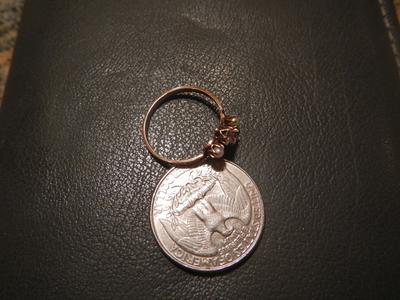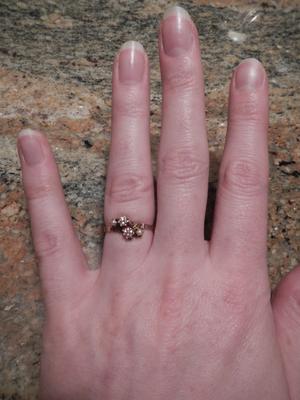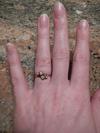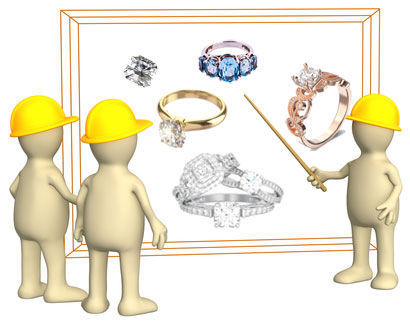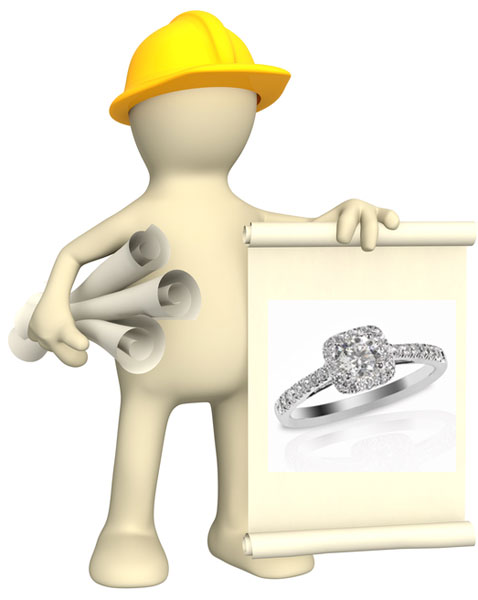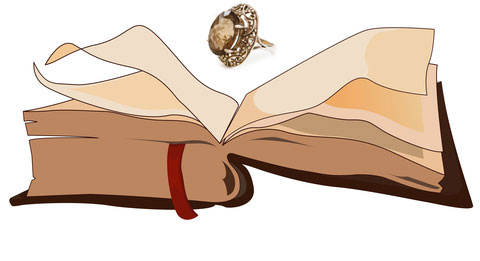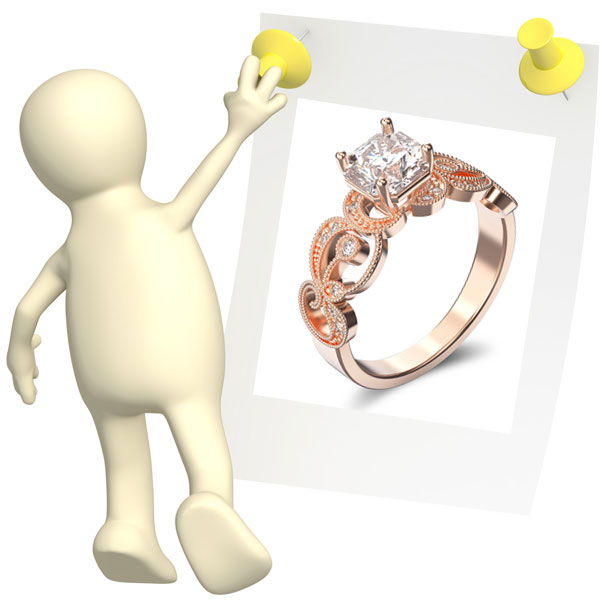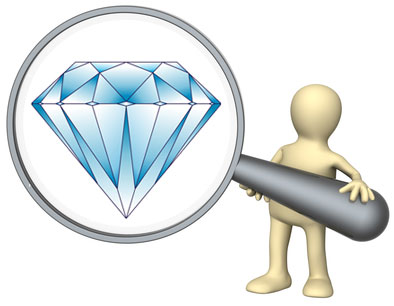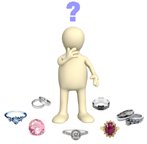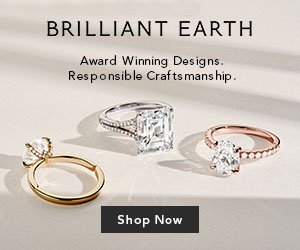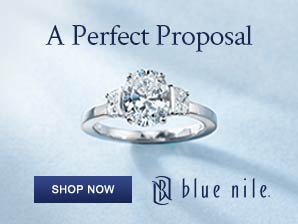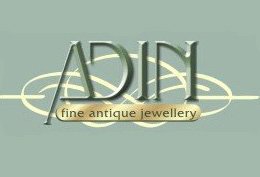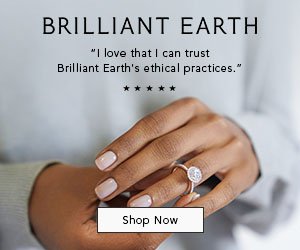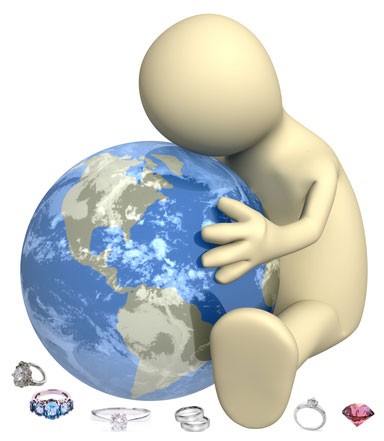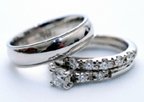Victorian ring?
by Laura
(Seattle, WA)
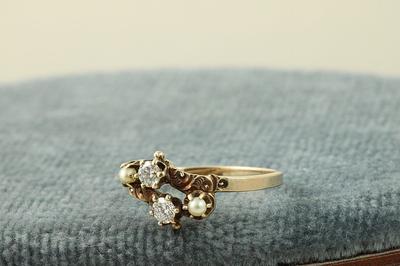
Victorian ring?
Hello!
My partner and I bought this ring from an antique jewelry shop online through the Ruby Lane host site. It was advertised as 14k gold (acid tested due to the lack of hallmark) with diamonds and seed pearls, though our local jeweler looked at it and confirmed that while the diamonds are real and of good quality, the gold is actually 9k rose gold.
The online shop stated that it is a Victorian ring due to the style, and the local jeweler said that he agrees that it is an English ring, possibly from 1915-1930. We absolutely love it, and despite the false advertising of it being 14k gold (which I am hoping was not intentional and an honest mistake), our local jeweler appraised it at twice the price we paid, and we decided not to return the ring.
After reading your information about Victorian jewelry I am hoping that you can give us your insight on the possible origins of this ring and if you think it may be an authentic Victorian ring. Thank you so much! Two of the pictures are the ones provided by the online store and make the ring appear quite a bit larger than it is.
Warmly,
Laura

Hi Laura,
This ring is really a very lovely find – and thank you for sharing these beautiful pics! The ring that you have, unless it is an amazing copy, definitely looks like an authentic antique ring.
Based on the ring’s style, materials, setting and metal though, I would date the ring as an early Art Nouveau ring crafted during the Late Victorian Age around the late 1800s (between around 1870 to the late 1890s) – which is a bit earlier than your local jeweler’s estimate…..and here is why.
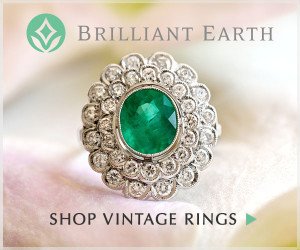
The ring is a striking combination of Victorian Age materials blended with a particular early Art Nouveau style – while the date your jeweler provided is more around the Art Deco years.
The metal – 9 carat rose gold – was especially popular during the Mid to Late Victorian years, and fell out of fashion during the later Art Nouveau and Edwardian years when it was replaced by higher gold karats and platinum.
The use of combining diamonds and pearls in engagement rings was very popular during the Late Victorian years – and high quality diamonds such as those were not widely available until around the later 1800s. The pearl and diamond settings too – gold claw prongs – are also indicative of this time. Platinum settings became quite the new thing during the Late Victorian years, and throughout the Art Nouveau and Edwardian style eras, but gold settings were still widely in use during the mid to late 1800s.
As for the style of the ring, it looks a lot like the early French Art Nouveau engagement ring style known as “Toi et Moi” – or in French “You and Me.” With this type of style, two gemstones – usually two diamonds, a pearl and a diamond, a sapphire and pearl, etc. – are placed together on the ring’s design as a representation of the lifelong commitment and shared future between two people.
Your ring is a bit unique, because instead of one pearl and one diamond there are two pearls and two diamonds – but this styling – and especially the twinning and wrapping of the gemstones together – was used early on in the Art Nouveau years (which was during the Late Victorian Age). And the gorgeous naturalistic inspired design features on the ring near the gemstones too practically shouts Art Nouveau!
As to where the ring was made, while it could have English origins – it could also possibly (and more likely) have French or Belgian origins too based on its style and lack of hallmarks.
Regarding the confusion on the karat of the gold – most gold acid test kits only test from 10k and up. Experienced jewelers often use electronic gold testing devices which can readily distinguish between a wide range of lower to upper gold karats – but if the person who sold you the ring was not aware that the acid test could not test below 10k gold, or did not know how to properly use the acid test, it very well could have been an honest mistake.
It would be interesting to know exactly why your local jeweler dated the ring to a later specific time period - unless it had something to do with the type of cut the diamonds have. Sometimes, specific types of diamond cuts can help to pin down the date of a ring too - or at least a time period after which it would have been made.
I hope this info is helpful, and sheds a little more light on the ring’s history – it is a beautiful treasure, and looks like it has been maintained in excellent condition. If you have never owned a ring with pearls before though, please take a look at EWR’s Pearl Engagement Ring page for special care tips on pearl rings.
Take care, and thanks again for sharing this wondering piece of engagement ring history with us!
Suzanne Gardner
Everything Wedding Rings
Recommended & Trusted Jewelers
Our Advertisement Policy
Adin Fine Antique Jewelry
Use Code=Everything-Wedding-Rings
For a 5% Discount
